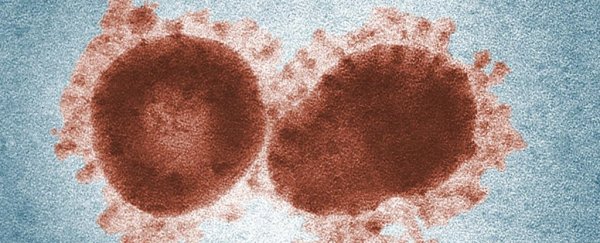As COVID-19 has hitchhiked around the globe, causing lockdowns, pneumonia and fear, scientists have been racing to determine where the SARS-CoV-2 coronavirus has come from.
While we don't have all the answers yet - including whether it came from an animal reservoir - a new analysis has definitively put to rest the conspiracies that claim it's a lab-made disease.
The study raises some interesting possibilities regarding the origin of the new coronavirus. One of the scenarios suggests the virus may have been circulating harmlessly in human populations for quite a while before it became the pandemic that's now stopped the world in its tracks.
"It is possible that a progenitor of SARS-CoV-2 jumped into humans, acquiring [new genomic features] through adaptation during undetected human-to-human transmission," the team from the US, UK and Australia writes in the study.
"Once acquired, these adaptations would enable the pandemic to take off and produce a sufficiently large cluster of cases."
The researchers analysed genomic data available from SARS-CoV-2 and other similar coronaviruses, showing that the receptor-binding domain (RBD) sections of SARS-CoV-2 spike proteins were so effective at binding to human cells, they had to be caused by natural selection.
"By comparing the available genome sequence data for known coronavirus strains, we can firmly determine that SARS-CoV-2 originated through natural processes," said one of the researchers, immunologist Kristian Andersen at Scripps Research.
"Two features of the virus, the mutations in the RBD portion of the spike protein and its distinct backbone, rules out laboratory manipulation as a potential origin for SARS-CoV-2."
With 'laboratory experiment gone wrong' out of the way, the team explored two viable hypotheses. First, that the natural selection occurred in an animal host before the virus was transmitted to humans. The team explains that although samples of coronaviruses in bats and pangolins have shown similar genomes, none of them fit perfectly just yet.
"Although no animal coronavirus has been identified that is sufficiently similar to have served as the direct progenitor of SARS-CoV-2, the diversity of coronaviruses in bats and other species is massively undersampled," the researchers write.
The second hypothesis is that the natural selection happened in humans - after the virus was transmitted from an animal host.
"The second scenario is that the new coronavirus crossed from animals into humans before it became capable of causing human disease," director of the National Institute of Health, Francis Collins explains on the NIH blog.
"Then, as a result of gradual evolutionary changes over years or perhaps decades, the virus eventually gained the ability to spread from human-to-human and cause serious, often life-threatening disease."
Although we don't yet know which of the two hypotheses is correct, the researchers think that more evidence might tip the scales in favour of one or the other - but we'll have to wait for that research to be done.
In the meantime, wash your hands, stay home, and help with the effort if you can.
The correspondence has been published in Nature Medicine.
